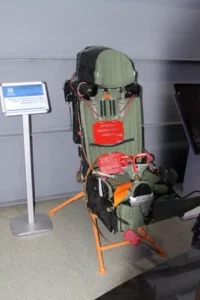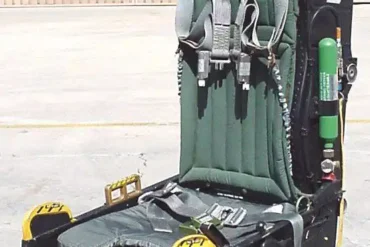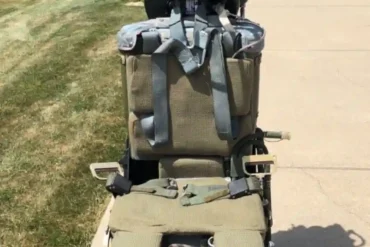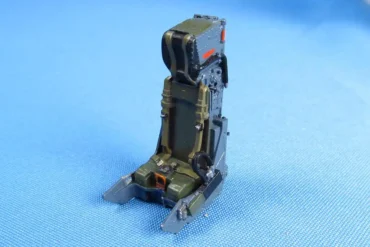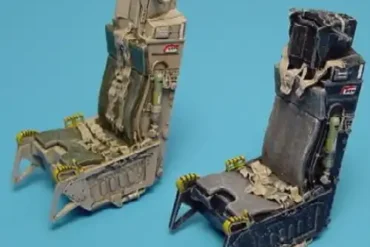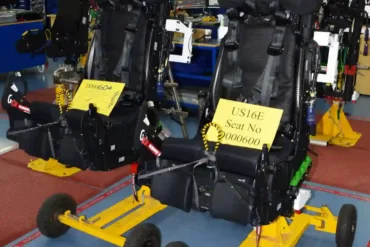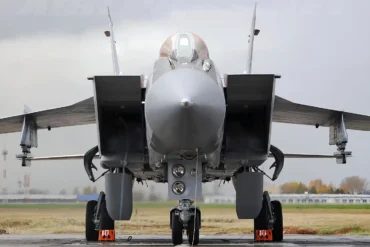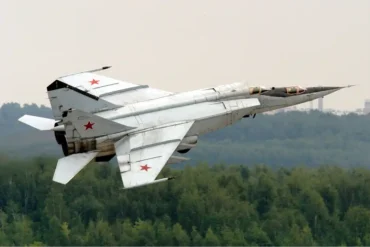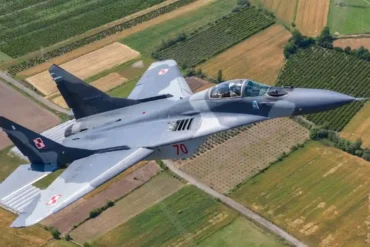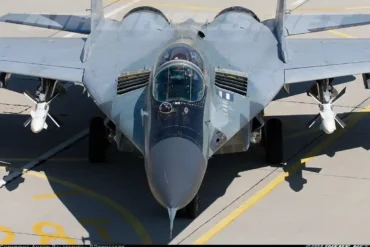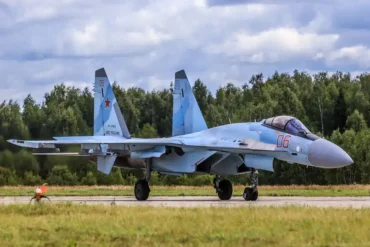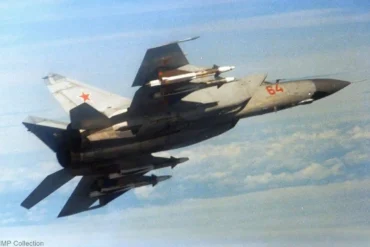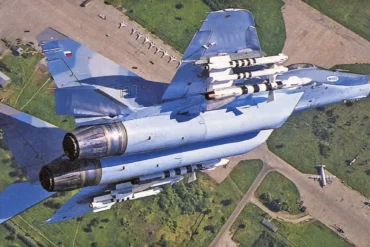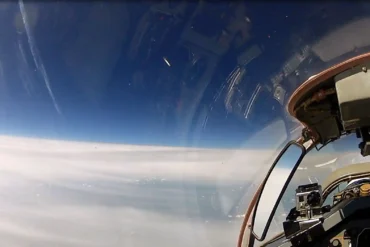The Zvezda K-36 ejection seat has earned its place as one of the most advanced and reliable systems in the world of aerospace safety. Developed by NPP Zvezda, this ejection seat has been installed in a range of Russian aircraft, including the MiG-29 “Fulcrum,” Su-27, Su-30MKI, and the cutting-edge Su-57. Designed to safeguard pilots under extreme conditions, the K-36 has revolutionized how aviation safety is approached, particularly in the context of high-speed, high-risk military jets.
The Role of the K-36 in MiG-29 Aircraft Safety
The MiG-29, a highly versatile and capable air superiority fighter, is one of the flagship aircraft of the Russian Air Force. Its operational complexity and high-performance thresholds necessitate sophisticated safety systems, particularly the ejection seat. The Zvezda K-36, specifically the K-36D model, is tailored for this purpose, offering a unique set of features that ensure pilots can eject safely even in extreme situations. Whether it’s at high speeds or during zero-zero conditions (zero altitude and zero speed), the K-36 guarantees that pilots are provided with the highest level of safety.
Zero-Zero Ejection Capability: A Critical Safety Feature
A hallmark of the K-36 ejection seat is its zero-zero ejection capability, which allows pilots to safely eject from the aircraft even if the plane is at a complete standstill, both in terms of altitude and speed. This innovation is particularly vital for handling emergencies during takeoff or landing, as well as in low-altitude operations. The development of zero-zero ejection systems began with Martin-Baker’s work in the West, but the Soviet Union’s adoption of this technology with the K-36 further enhanced its efficiency, making it one of the most reliable ejection seats worldwide.
The zero-zero ejection process allows the pilot to be launched into the air with enough height and speed to deploy a parachute safely, even when the aircraft is stationary or in an uncontrolled descent. This functionality has been demonstrated in several real-world cases, including some of the most harrowing emergency ejections in military aviation history.
Key Components of the Zvezda K-36
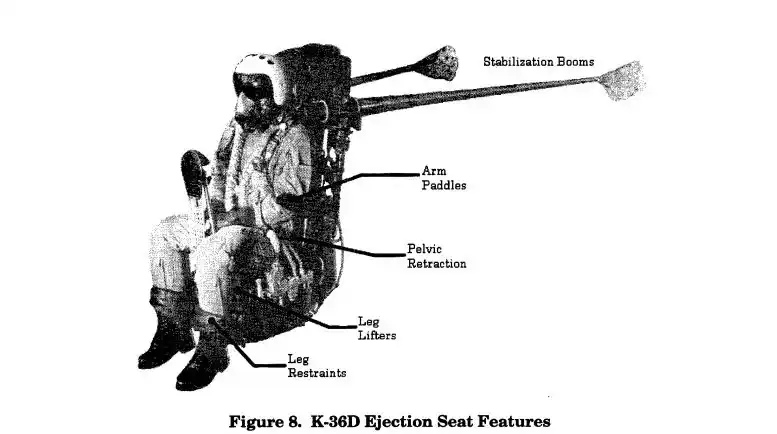
The Zvezda K-36 seat comprises several key components, each contributing to its overall effectiveness in a crisis:
- Ejection Rocket Firing Mechanism: This is the primary component that propels the seat out of the aircraft. Once activated, the seat is launched along guide rails, with the pilot being propelled to safety. The rocket system ensures rapid and efficient ejection even at extremely low altitudes.
- Leg Restraint System: This feature ensures that the pilot’s legs are protected from being caught during the ejection process. It is a crucial safety feature, as the force of the ejection can put significant stress on the body.
- Headrest Rescue System: The K-36 seat incorporates a headrest that functions as part of the rescue system. It helps ensure that the pilot’s head is properly supported and protected during ejection.
- Parachute Deployment System: Once the pilot has been ejected from the aircraft and is at a safe distance, a series of sensors detect altitude and speed, triggering the parachute deployment system. The parachute is deployed automatically, providing a safe descent to the ground.
- Stabilization Booms: The K-36’s telescoping stabilization booms are crucial in maintaining the stability of the pilot during ejection. Positioned at a 15-degree angle, these booms help to stabilize the seat from the moment it leaves the aircraft until the parachute opens.
- Windblast Deflector: This deflector protects the pilot from the extreme wind forces generated during ejection. Without this component, the aerodynamic forces could be fatal.
Together, these components form a cohesive, integrated safety system, allowing the K-36 to protect pilots across a wide range of flight conditions, from high-speed, high-altitude scenarios to low-speed, low-altitude emergencies.
Real-World Ejections: Demonstrating the K-36’s Effectiveness
The Zvezda K-36 has been proven to save pilots in some of the most challenging and dangerous ejection scenarios. The system gained worldwide attention in 1989 when Anatoly Kvochur, a test pilot for the Soviet Air Force, successfully ejected from a MiG-29 at a mere 300 feet altitude during a high-speed emergency. This ejection took place at a speed of 100 knots (185 km/h), and the pilot’s parachute deployed just 15 feet above the ground. This dramatic incident not only demonstrated the capabilities of the K-36 but also set a new standard for ejection seat technology.
Other notable ejections include incidents involving MiG-29s during the Royal International Air Tattoo in 1993, and a 2022 event during the Russian invasion of Ukraine, where a pilot was filmed ejecting from a Su-25 aircraft.
In each of these cases, the K-36’s design and functionality were critical in ensuring the survival of the pilots. The system allowed them to escape aircraft in extreme conditions, including low altitude, low speed, and unusual aircraft attitudes, proving its reliability and efficiency under pressure.
The Science Behind the K-36: Superior Engineering
The K-36 system stands out not only for its functionality but also for the scientific principles behind its design. Developed by the Zvezda Design Bureau, the seat is engineered to withstand extreme conditions, such as high speeds (up to Mach 3) and altitudes (up to 80,000 feet). These specifications demonstrate the K-36’s versatility and its ability to protect pilots across a wide spectrum of flight scenarios.
The design of the seat integrates subsystems that include:
- Aerodynamic stabilization systems (such as the stabilization booms and windblast deflectors) to ensure the pilot’s trajectory remains controlled and predictable during ejection.
- Restraint mechanisms (such as the leg lifters and arm restraints) to minimize the physical impact of ejection forces on the pilot’s body.
- Parachute deployment sensors that activate based on real-time altitude and airspeed data to ensure a smooth and safe descent after ejection.
Furthermore, the integration of the seat with the pilot’s flight gear, such as pressure suits and helmets, ensures that the pilot remains fully protected from the forces exerted during ejection. This integrated approach makes the K-36 a true system of systems, rather than just a seat.
The MiG-29 and the K-36: A Partnership in Survival
The MiG-29, known by NATO as the “Fulcrum,” is a versatile and powerful aircraft designed for air superiority. While its performance capabilities are formidable, the aircraft’s complexity and speed require advanced safety features. The Zvezda K-36D ejection seat is one such feature that ensures the pilot can escape unscathed during an emergency.
One of the most remarkable aspects of the K-36 is its ability to perform zero-zero ejections. Unlike traditional ejection seats that require the aircraft to be moving at certain speeds or altitudes, the K-36 allows the pilot to eject safely even when the aircraft is stationary on the runway or during an in-flight emergency at low speeds. This was demonstrated during a routine night training sortie in Rajasthan, India, where a MiG-29 pilot safely ejected after experiencing a technical snag, underlining the seat’s life-saving potential.
Conclusion: The Legacy of the Zvezda K-36
The Zvezda K-36 ejection seat has set the gold standard for military aircraft safety, particularly for high-performance jets like the MiG-29. Its innovative features, including zero-zero ejection capability, precise stabilization systems, and integrated pilot safety gear, ensure that pilots have the best possible chance of survival during emergencies. The system’s proven reliability in real-world ejections has cemented its place as one of the most advanced ejection seats globally.
From the MiG-29 to the Su-57, the K-36 continues to provide a critical layer of protection for pilots in some of the world’s most challenging aircraft. As technology evolves, the Zvezda K-36 remains a testament to the importance of safety in aviation and a symbol of the cutting-edge engineering that ensures pilot survival in the most extreme conditions.
